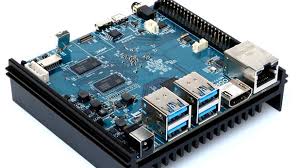
Breaking News
We Americans Need to Dig Deep into Historical Perspective
 A timeless clip of Michael Burry explaining how he used credit default swaps...
A timeless clip of Michael Burry explaining how he used credit default swaps...
 The next financial crisis won't start in a bank lobby. It's already brewing in the market
The next financial crisis won't start in a bank lobby. It's already brewing in the market
Top Tech News
 This tiny dev board is packed with features for ambitious makers
This tiny dev board is packed with features for ambitious makers
 Scientists Discover Gel to Regrow Tooth Enamel
Scientists Discover Gel to Regrow Tooth Enamel
 Vitamin C and Dandelion Root Killing Cancer Cells -- as Former CDC Director Calls for COVID-19...
Vitamin C and Dandelion Root Killing Cancer Cells -- as Former CDC Director Calls for COVID-19...
 Galactic Brain: US firm plans space-based data centers, power grid to challenge China
Galactic Brain: US firm plans space-based data centers, power grid to challenge China
 A microbial cleanup for glyphosate just earned a patent. Here's why that matters
A microbial cleanup for glyphosate just earned a patent. Here's why that matters
 Japan Breaks Internet Speed Record with 5 Million Times Faster Data Transfer
Japan Breaks Internet Speed Record with 5 Million Times Faster Data Transfer
 Advanced Propulsion Resources Part 1 of 2
Advanced Propulsion Resources Part 1 of 2
 PulsarFusion a forward-thinking UK aerospace company, is pushing the boundaries of space travel...
PulsarFusion a forward-thinking UK aerospace company, is pushing the boundaries of space travel...
 Dinky little laser box throws big-screen entertainment from inches away
Dinky little laser box throws big-screen entertainment from inches away
 'World's first' sodium-ion flashlight shines bright even at -40 ºF
'World's first' sodium-ion flashlight shines bright even at -40 ºF
Connectivity and speed at the core of latest Odroid maker board

But they don't suit every project, and Hardkernel recognizes that there's a strong market for more powerful, more capable and more expensive boards. And the Odroid N2 ticks all of those boxes.
Hardkernel has a history of making the Raspberry Pi look like a bit of a performance slouch – with 2016's C2 for example, and last year's H2. Now the N2 follows that theme with more processing power, more system memory and, well, just more.
The N2's two processor setup sees a quad-core ARM Cortex-A73 1.8 GHz chip working with a dual-core Cortex-A53 CPU, while a Mali-G52 GPU takes care of the visuals. And it can be had with either 2 or 4 GB of DDR4 RAM.
Connectivity shapes up nicely with a 40-pin GPIO expansion header, four USB 3.0 ports, one micro-USB 2.0 OTG port, one full-size HDMI 2.0, Gigabit Ethernet and a UART (Universal Asynchronous Receiver/Transmitter) connector.

 The AI money machine!
The AI money machine!

